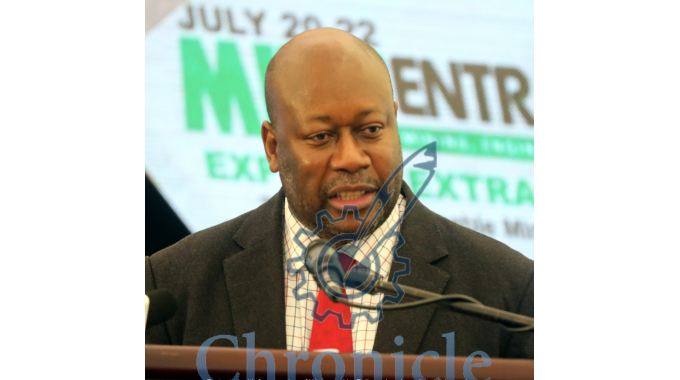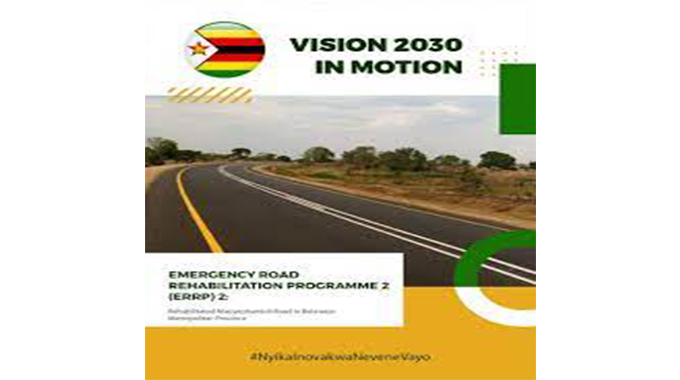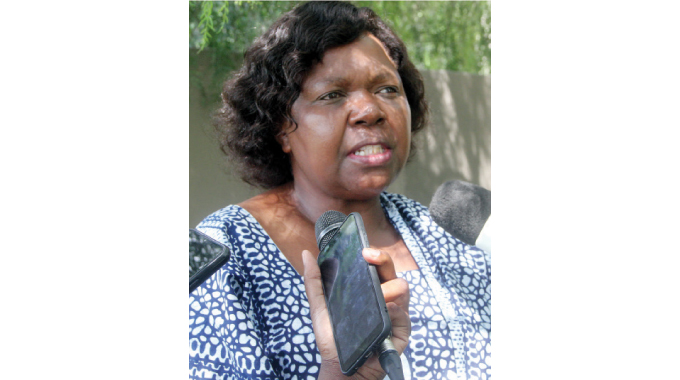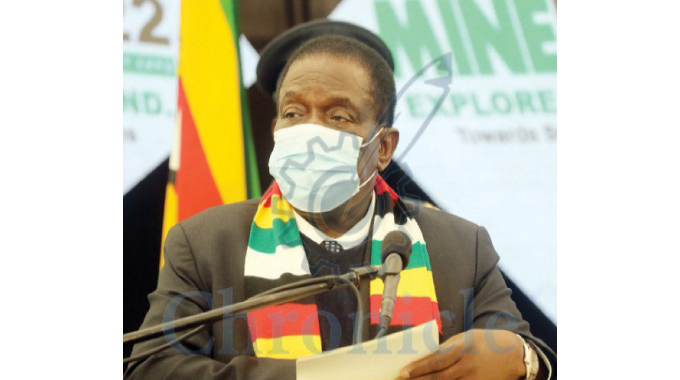‘Vision 2030 fulfilment irreversible’

Mashudu Netsianda, Senior Reporter
ZIMBABWE’S vision of attaining an upper-middle income economy by 2030 is irreversible as progressive implementation of transformative projects across key sectors of the economy including mining, is scoring major success, Mines and Mining Development Minister, Winston Chitando, said yesterday.
Guided by the National Development Strategy (NDS1:2021-2025), the Second Republic led by President Mnangagwa is building the momentum towards Vision 2030, which seeks to realise gross domestic product per capital of US$3 500.

National Development Strategy (NDS1)
Already a number of flagship infrastructural development projects are at different stages of implementation across the country, thereby creating massive job opportunities and expanding business for local contractors and suppliers.
This includes key infrastructure projects in Matabeleland region, some of which have been in limbo for many years.
Among the key projects is the US$300 million Beitbridge Border Post upgrade, re-opening of Ekusileni Hospital after 17 years ago of closure, Bulawayo water development projects, major irrigation infrastructure rehabilitation, Lupane Provincial Hospital and the 600MW Hwange Power Station Expansion, which is almost 90 percent complete.
Under Bulawayo water projects, huge focus is being directed to the massive multi-million-dollar Lake Gwayi-Shangani project, whose completion is due by the end of this year. The project is a critical component of the National Matabeleland Zambezi Water Project, which has been a pipe dream since 1912.
The completion of Lake Gwayi Shangani will spur rural industrialisation through provision of electricity and clean water to villages while weaning off some Bulawayo supply dams in Matabeleland South to cater for other developmental projects.
Several other projects are at different stages focusing on social amenities, livestock development, housing and transportation, which is guided by the Emergency Road Rehabilitation Programme (ERRP). The projects are consistent with NDS1 and dovetail with the country’s devolution thrust.

Emergency Road Rehabilitation Programme (ERRP).
Minister Chitando said mining was one of the key sectors expected to drive the country towards an upper middle-income economy and is already on course towards attaining the US$12 billion milestone target next year.
When the Government launched the US$12 billion mining strategic roadmap, the value of Zimbabwe’s minerals’ contribution to the economy was hovering around US$2,9 billion but the figure sharply rose to US$5,2 billion last year.
In his remarks during the 25th Edition of the Mining, Engineering and Transport Conference in Bulawayo, Minister Chitando said Zimbabwe’s economy is making positive strides.
“President Mnangagwa has formulated a programme through having Vision 2030. Through the, ‘Zimbabwe is Open for Business’ policy and Nyika inovakwa nevene vayo/Ilizwe lakhiwa ngabaninilo philosophy, whether you like it or not, Zimbabwe’s economy is developing and the country is moving day by day towards an upper middle-income economy and that trend is irreversible,” he said.
“The mining sector and other sectors including infrastructure are continuing to develop. His Excellency, President Mnangagwa is spearheading the country’s economic growth, not only in the mining sector, but also in various sectors of the economy.”
Minster Chitando said the mining sector is expected to play a key role towards a better Zimbabwe hence the theme of the 25th Edition of Mine Entra, “Explore. Extract. Expand — Towards Sustainable Mining Value Chains,” rightfully points out the need for the mining industry to refocus its strategy and work hard towards ensuring an accelerated and sustained growth.

25th Edition of Mine Entra
“In simple terms, apart from the value of the minerals being extracted, the expectation of the mining industry in terms of contributing to Vision 2030 is from the upward integration, the downward integration as well as investment in infrastructure,” he said.
Minister Chitando said given that most products and services fed into the mining industry are from local industries, these should complement the extraction of minerals and contribute more to the attainment of the national vision.
“The mining sector is set to generate US$12 billion by 2023 thereby contributing significantly towards the attainment of the national vision,” he said.
“For the country to fully benefit as with the provisions of NDS1, there is a need to take full advantage of the potential that exists in upward and downward integration opportunities.
“A number of projects have been commissioned by His Excellency, President Mnangagwa and there are also a number of projects in the pipeline, also to be commissioned.”
Minister Chitando commended the private sector for working closely with the Government in the mining sector saying the US$12 billion mining industry by 2023 would be achieved.
“An upper middle-income by the year 2030 would be achieved and day by day is being achieved,” he said,
Speaking at the same occasion Bulawayo Provincial Affairs and Devolution Minister, Judith Ncube, said this year’s Mine Entra focus calls for the city to explore viable investment opportunities within the mining value chain.

She urged players in the mining industry to extract value from new systems and analysis as well as expand the industry’s current earnings.
“The theme for this year is explore, extract, expand towards sustainable mining value chains.
May we take this event as a chance to learn and gain inspiration to keep working hard in a bid to fulfil our country’s vision of prosperity,” said Minister Ncube.
“May we keep exploring, extracting and expanding our economic value towards a more prosperous Zimbabwe.”
– @mashnets.











Comments